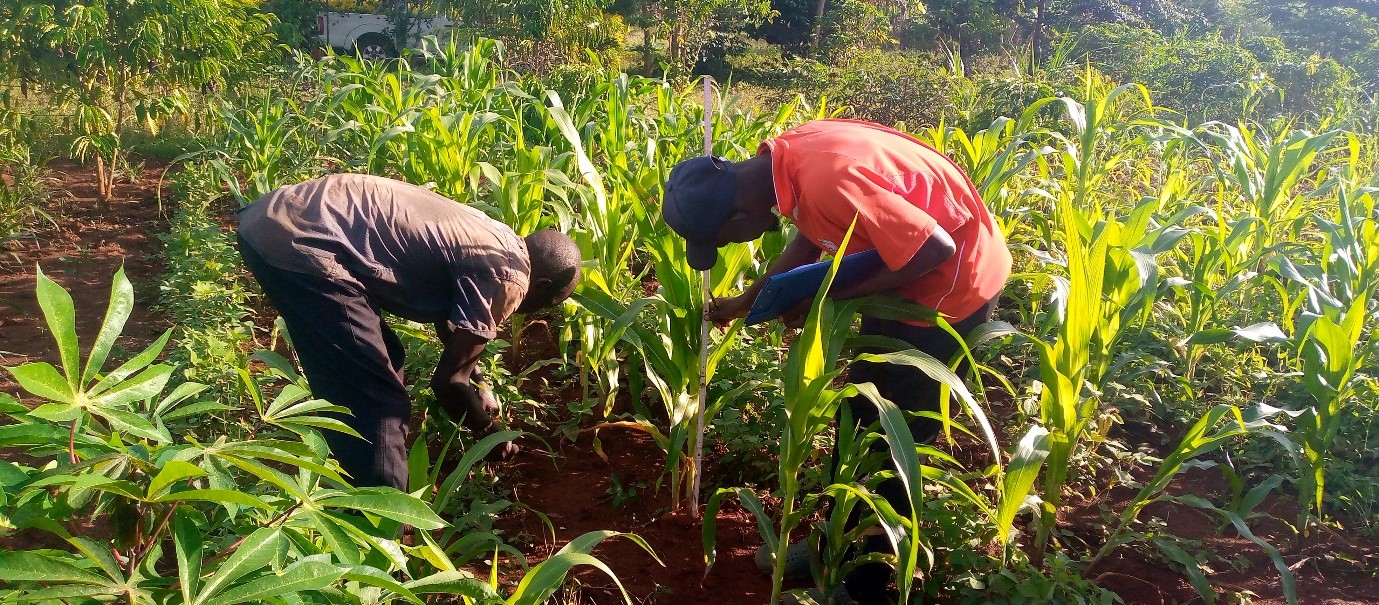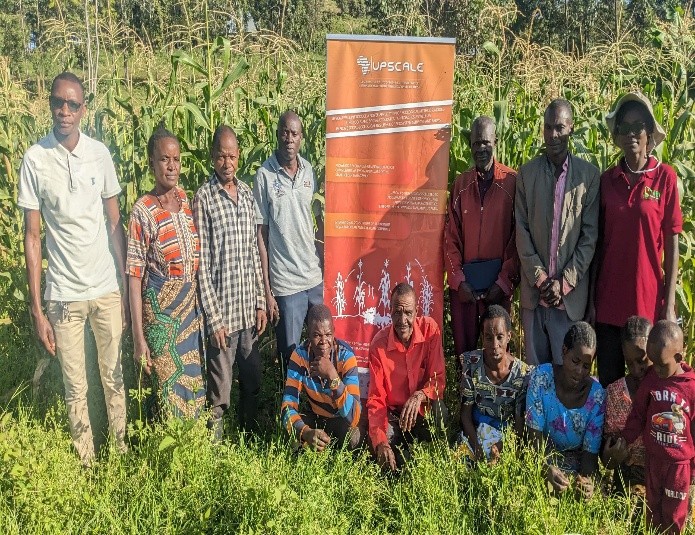As the UPSCALE project extends its impact across East Africa, our partner NARO, along with its constituent institute NaCRRI, coordinated a range of activities based on sustainable and climate-smart farming practices based on Push-pull technologies (PPT) in Uganda.
Efforts are being made to integrate PPT into existing farming systems, such as the maize beans intercrop, with the overarching goal of enhancing maize production and productivity while minimizing environmental impact. The team already established 21 PPT demos with farmer groups in Kamuli, Namutumba and Iganga districts and four trials involving bean integration during 2023B, serving as learning centres to facilitate the adoption of PPT among stakeholders.
To ensure optimum performance of the pest management system under PPT, the companion plants have to be managed to the best standard. The team, therefore, performs regular visits and training of the host farmers and other members on the proper trimming of companion plants to ensure it. The training that is conducted will monitor the crop performance in push-pull and none push-pull control plots. This is the first report on the proper management of push-pull during the 2023B season.
The team from NaCRRI worked with agricultural extension officers attached to the respective sub-counties and visited the demo sites. Host farmers and extension agents had already mobilized other members to converge at the demo sites. The farmers were briefed on the benefits of properly managed PPT plots and then taken through a hands-on experience for the trimming of Desmodium, scouting for pests and Striga weeds. The members after it made a comparison between push-pull and control plots.
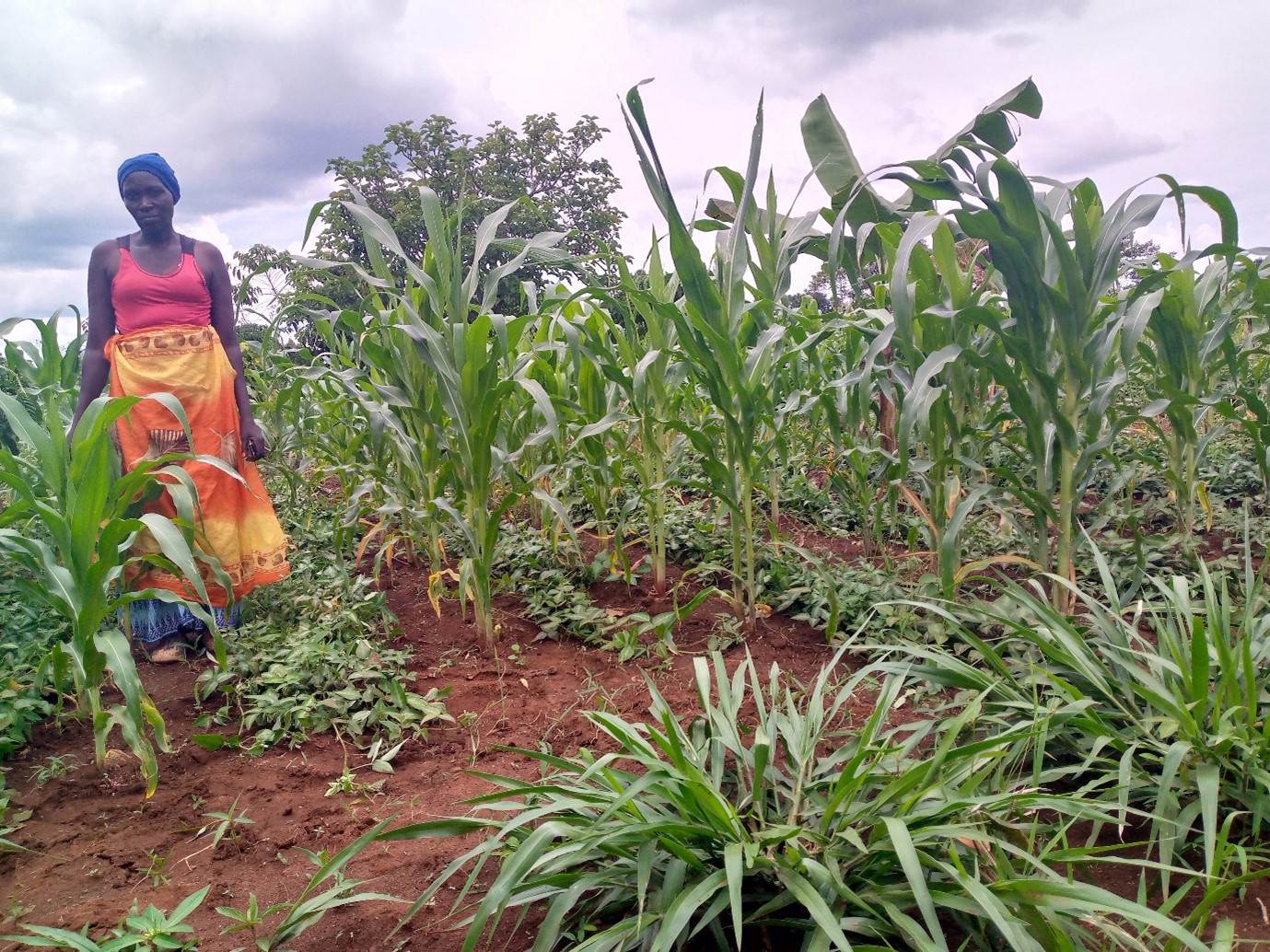
Jalia Nkanwagi farmer standing in her push-pull planted with Siverleaf Desmodium
As for the results, the team visited 21 demo sites across Kamuli, Iganga and Namutumba districts with 149 (67 males and 82 females) participating in the demonstrations. Farmers appreciated that maize protected under push-pull had a lower incidence of FAW damage than the sole maize or intercrop. The same observation was for Striga weeds. Some Striga weeds were visible in some push-pull plots, but the farmers revealed that their counts were not as many for previous seasons.
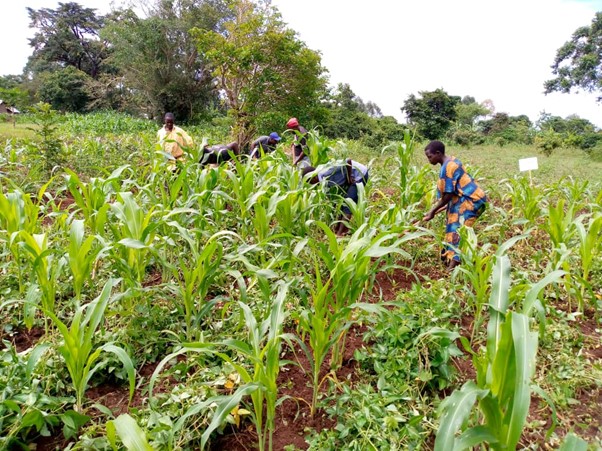
Farmers at Bulogo village, Kamuli district, participate in weeding of push-pull plot
Famer also preferred to use Greenleaf (Desmodium intortum) which exhibited erect stems to Silverleaf whose stems were unhealthy. This preference had more to do with ease of trimming and being less laborious during weeding.
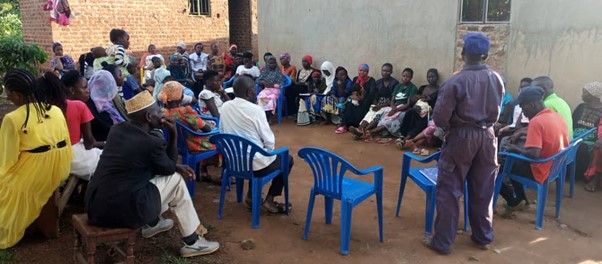
Farmers at Kabira village, Namutumba district gather to learn about PPT
In general, farmers characterized push-pull as being labour-intensive. Some farmers emphasize requiring three times more labour to weed the same size of push-pull than mono-crop, however, how to compensate for labour requirement is yet to be realized.
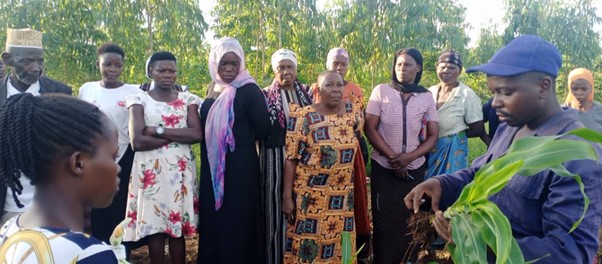
Farmers at Kiwerere village Iganga district witness how Striga weeds affect maize growth by attaching their roots

